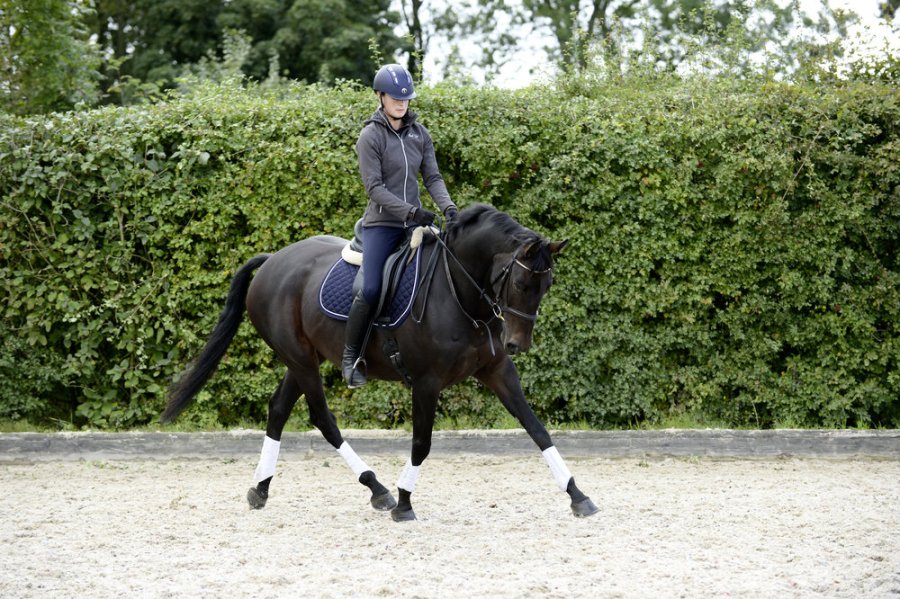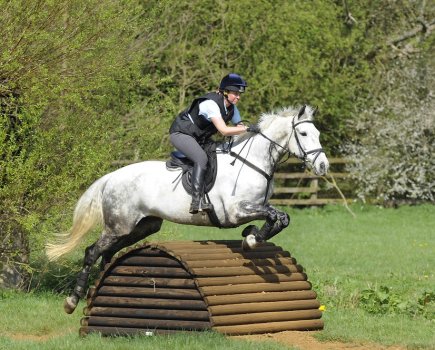Whether you compete in dressage or jumping, or hack and school for pleasure, having your horse feel equal down both reins and around both legs is paramount to the outcome of each ride and, ultimately, your horse’s physical wellbeing. Like humans, horses are often one-sided and find working on a certain rein and staying straight through their body difficult. International grand prix dressage rider Levi Hunt explains three exercises that can help.
If your horse falls in or out through the shoulder on a circle or in corners, drifts to one side when approaching a jump, or feels heavier on one rein compared to the other out hacking, this is often a sign that one side of their body is overruling the other.
Of course, rider balance and the fitting of your tack contribute to your horse’s straightness, but assuming both of these factors are correct, here are three exercises you can do to get your horse feeling as even as possible down both reins.
Exercise 1
Time: 10 minutes
We often ride our horses on the track alongside the arena fence, but this can make your horse rely on the fence line when it comes to staying straight. Riding away from the fence line can give you an idea of how straight your horse is and how much they rely on the fence.
How to ride it:
- However you warm up, do it away from the security of the track in walk, trot and canter. Even riding just 1ft off the track will highlight which bend your horse prefers. Identifying this is the first step to fixing it.
- If left bend is their preference, then they will typically try to fall out on the left rein and fall in when on the right rein.
- To stop them falling out onto the track, keep your outside leg on the girth and get them reactive to the leg so that it creates a barrier between them and the wall.
- To prevent your horse from falling in when you change the rein you have to keep them reactive to the leg that they would fall out through.
If they prefer the right rein, do the same on the other rein.
Exercise 2
Time: 10 minutes
Now that you’ve identified and improved your horse’s straightness, you can explore the arena using the diagonal lines, quarter line, centre line and three-quarter line.
How to ride it:
- Use visuals in front of you to draw you forwards to a goal straight ahead, such as a letter, a tree in the distance or even a scary dressage judge if you’re competing! Looking down will exaggerate any wobbles or crookedness so keep your eyes on that straight prize.
- As you ride the various lines pay close attention to your hands, making sure they are as parallel in appearance and feel as possible. Your reins are the steering wheel and your job is to keep everything level. Even if your horse doesn’t feel level themselves, they will begin to follow your lead.
Exercise 3
Time: 10 minutes
By now, you’ve taken off the stabilisers (i.e. stayed away from the arena wall) for most of your session and experimented with riding more varied lines in the school. The final step to achieving straightness is practising leg yield.
How to ride it:
- The most helpful thing you can do to even up your horse is to not just stop them from falling through their weaker side, but to actually push them sideways away from it. So apply your leg at the girth, and as you trot down either the quarter, three-quarter or centre line, stay straight in your posture and move your horse sideways away from your leg.
- If your horse is particularly reluctant to move sideways then widen the rein that you are trying to head towards to help open up that side and encourage them into it.
- Leg yielding sideways in both directions is important, but priority should be given to the more difficult side so that they start to supple up.
- Working your horse in this way will help to limber them up and break down the barrier of stiffness that causes that feeling of unevenness in your hands and around your legs.
Top tip: Don’t forget the halt
Simply halting and looking at where your horse rests their head can tell you a lot about their favoured bend. Unless you have a magic unicorn, every horse will favour one direction. Widen your hands until your horse can feel an even rein and you can see a symmetrical image of their head. It’s a great way to explain what you want without the hassle of being on the move.
Meet the expert: Levi William Hunt is an international grand prix dressage rider based in Herefordshire. Alongside competing and producing a variety of young horses, Levi is a UKCC Level 3 trainer and hosts clinics, camps and demonstrations around the UK.










